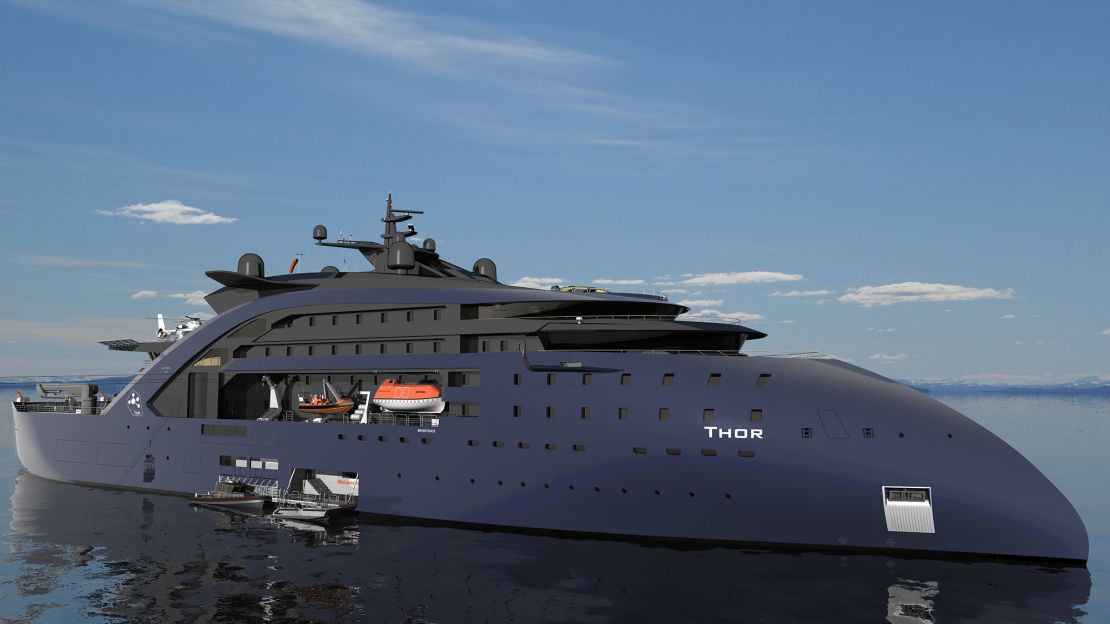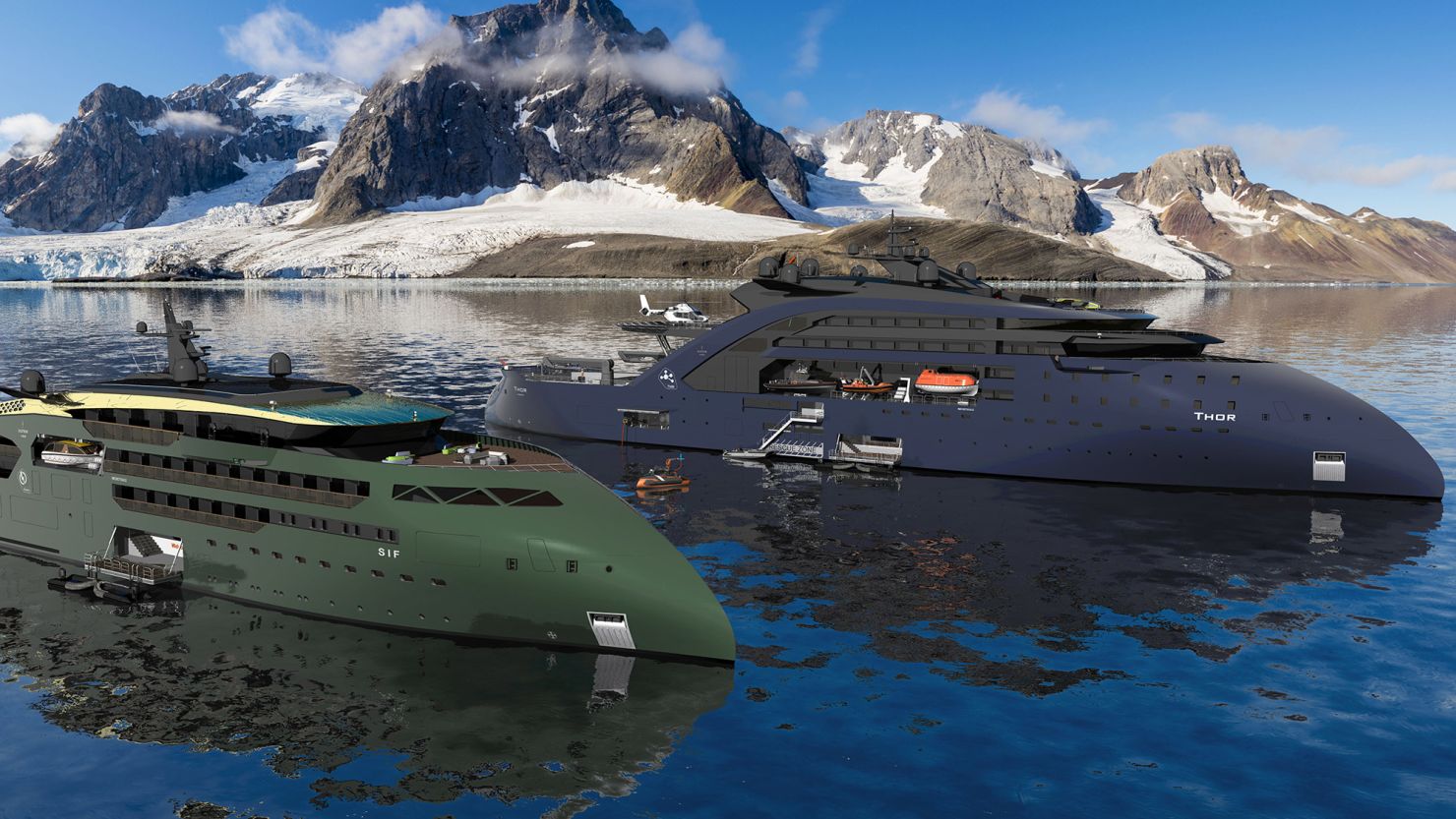A new ship design concept from Norwegian shipbuilder Ulstein could be the first step toward a zero-emission future for expedition cruises and a range of other maritime operations.
The proposed 500-foot-long vessel is called Thor – a reference to both the Norse god of thunder and the element thorium, which would power its on-board nuclear reactor.
Such a ship would never need to refuel and could create its own supply of electricity, which in turn would be used to power a companion vessel, Sif, named after a golden-haired Norse goddess who was also Thor’s wife. This expedition cruise ship, with a passenger capacity of 60, would be able to explore environmentally fragile areas with minimal impact.
“Sif produces no emissions, so she can cruise in full-electric mode, and Thor would be her charging station,” says Ulstein chief designer Øyvind Gjerde Kamsvåg. “They are concepts right now and they might not be built in this way, but they start off important discussions. We’ve been thinking about thorium as an energy source since 2008, but there is a stigma associated with nuclear power.”
Molten salt reactor
The ship would use a molten salt reactor, a type of nuclear reactor that was first tested in the 1960s, so called because it used a mixture of liquid salts in its core.
It’s billed as a potentially safer alternative to traditional nuclear reactors, because it operates at a much lower pressure and a meltdown is impossible: If the core overheats, the salt mixture automatically drops into a containment vessel, where it harmlessly solidifies. In the core, the radioactive thorium heats the molten salt, which turns water into steam and activates a turbine to make electricity.
These reactors have attracted interest in recent years, and modern versions are under development in several countries including the US, China, Canada and Denmark. It will be many years, however, before they can be commercialized or installed onto ships.

The reactor is not the only future technology that Thor and Sif require, because the latter is meant to be fitted with solid state batteries. This new type of battery is internally solid, rather than liquid like the lithium batteries we use today, offering greater capacity and better resistance to fire.
These batteries are expected to power the next generation of electric cars, but they are also still in the development stage and their widespread adoption could be a decade away.
Harnessing the possibilities offered by these technologies, Thor and Sif could revolutionize expedition cruises, a more adventurous type of cruise that targets remote or scenic locations such as Antarctica, the Arctic Circle, Greenland or the Galapagos islands.
“If you get restless lying on a sunbed, that’s the cruise for you,” says Ulstein naval architect Torill Muren. “You have plenty of good food and drink, but there are no showy lounges like on a typical cruise, because you don’t really need it. Instead, you get lectures to learn about the wildlife and the environment that you then go out and explore for yourself.”
Timelines

By 2026, the West Norwegian Fjords – two long coastal inlets in southwestern Norway that are a UNESCO World Heritage site – will be closed off to cruise ships and ferries, allowing access to zero-emission vessels only.
Similar regulations could come into force elsewhere in the world, accelerating the need to transition to cleaner expedition ships: “The time has come to introduce something for the future and get the discussion going on the technology, safety and regulations around [molten-salt reactors], because for some of the different ships in the world, at least those going very far distances, it may be the only way of getting CO2 emissions down,” says Muren.
Both Thor and Sif sport an unusual, backward sloping bow that Ulstein calls the X-Bow, already in use in around 100 ships around the world.
Ulstein says that unlike a conventional bow, which rises on the waves and then sometimes drops violently, this design makes the ship more stable, with less splashing and slamming. The result is a smoother ride, reduced fuel consumption and less mechanical wear.
“Everything is smoother and the sensation of safety is much improved, ” says Gjerde Kamsvåg. “We also see that vessels with X-Bow can maintain a higher speed and use less energy through the harshest weather and offer a much improved experience in cruise vessels in particular.”
Thor’s ability to make its own electricity would also make it an ideal replacement for current power barges, a type of ship that functions as a floating power plant to bring electricity to developing countries or disaster areas.
The ship is also equipped with drones and helipads, which would be useful in search and rescue operations. A lot needs to happen before the concept becomes reality, however: “We could launch a fully operational ship in maybe 10 to 15 years,” says Gjerde Kamsvåg.
